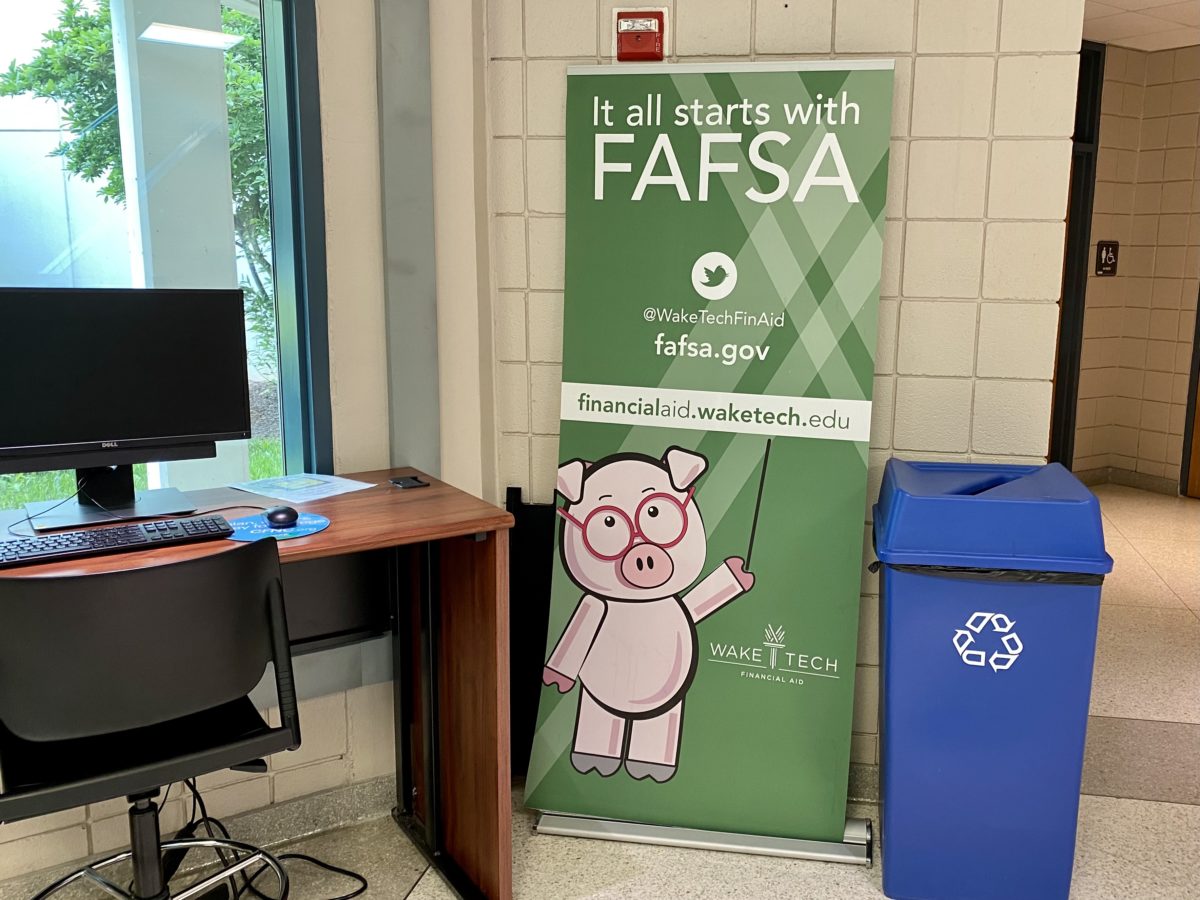
Coming from a single parent household in a major urban city, the idea of college was overwhelming for me. My mother worked hard to pay our bills; and I could not bring myself to burden her with a conversation about college. My school counselor at our mostly Black high school, Willie Stroble, gave me no choice in the matter when it came to college.
I remember sitting in the guidance office completing college applications during my assigned time slot. My next task was to bring Mr. Stroble my mom’s tax forms. Stroble, with my mother’s permission, helped me complete my FAFSA (the Free Application for Federal Student Aid). Shortly thereafter, I received an award letter in the mail from the U.S. Department of Education. I did not know fully what it meant, but it said I had money to go to college.
That letter was enough to encourage me to take the next step. Today, I am a first-generation college student who has earned a bachelor’s degree, a master’s degree, and am in the last few semesters of a PhD program. Access to Pell Grants and scholarships through the FAFSA changed my life.
June 2022 marks the 50th anniversary of the federal Pell Grant. Policymakers, including David Mundel, who served in the Budget Bureau under then President Lyndon Johnson, “sees the cause both for celebration and concern in the ways access to higher education has and hasn’t changed since he first immersed himself in the issue” back in 1972. In the 2019 MIT Alumni article, Mundel speaks about the current higher education landscape and the barriers that still exist to college access and completion as a measure of success. One of those challenges is the filing of the FAFSA used to determine eligibility of Pell Grants for students who have not yet obtained a bachelor’s degree.
Today, I serve as vice president of student success services at Rowan-Cabarrus Community College. I have learned that community college students are less likely to file a FAFSA but are more likely to be eligible. Changing that reality has become a mission of the student success services team at our college.
We understand that Pell Grant recipients come from lower income households, are at least 24 years old (considered independent of their parents), and plan to enroll part-time. This is the model description of America’s community college students today. In 2006, researchers began exploring the relationship between community college students and federal Pell Grants.
In the 2013 article: “Why Community College Students are so Poor, but Only 16.9% Received Federal Pell Grants,” Kentucky researcher Cody Davidson took a closer look at the issue of the FAFSA verification process as one of seven reasons families do not apply for federal aid. Davidson called on policymakers and financial aid administrators to streamline the verification process and to simplify the FAFSA form.
North Carolina students are leaving federal money on the table
The relationship between community college student enrollment and the FAFSA can also be indicative of low retention and completion rates. College students may feel overwhelmed by the sacrifice and risks when it comes to choosing between working a job for short-term gain or enrolling in college classes with hopes of a longer-term career option. The income associated with a part-time job could also impact the amount of aid eligibility.
It can be complicated for parents of students to understand the FAFSA and how the eligibility formulas impact each college student differently. Nationally, high school graduates in the class of 2021 left nearly $3.75 billion in Pell Grants unclaimed; over $120 million of those funds could have gone to North Carolina high school graduates.
To close this opportunity gap, we must educate high school students, high school counselors, administrators, teachers, community college staff and faculty, community business leaders, and legislators of the importance of FAFSA completion to ensure access to college for all students.
State policies could impact federal aid access
MyFutureNC, a nonprofit organization commissioned by the North Carolina General Assembly to raise the educational attainment level significantly by 2030, is closely tracking FAFSA completion. The state’s federal aid completion rate was 57% overall in 2021 among high school graduates and adult students.
With similar higher education attainment goals, at least six states across the country including Florida, Hawaii, Indiana, Nebraska, New York, and South Carolina are considering policies that would require FAFSA completion or a signed “opt out” waiver from every high school senior as a graduation requirement. Supportive lawmakers in these states express policies like this would increase college enrollment and affordability.
Notably, Louisiana became the first state to make completing the FAFSA mandatory for high school graduates. Peter Granville is a policy researcher who studies FAFSA requirement initiatives and, after evaluating the forerunning state, he concluded that “under Louisiana’s policy, poor students were finally completing the FAFSA at the same rate as richer students … that gap vanished within a remarkably short time.”
Recommendations to raise North Carolina FAFSA completion rates:
Through the MyFutureNC initiative, North Carolina has committed to the aspirational 2030 goal of 80% of high school graduates completing the FAFSA. Increased FAFSA completion can help our state achieve this goal with the following recommendations:
- Inform parents of high school seniors through school counselors and administrators. A high school student is not likely to request help with completing the FAFSA without a nudge from a parent or family member.
- High school counselors should include FAFSA completion as an item on the senior checklist like my school counselor, Mr. Stroble did for me back in 1994.
- State legislators should consult the FAFSA policies in Tennessee and Louisiana as exemplars to determine the feasibility and utility of such a policy in North Carolina. Tennessee is the number one state in FAFSA completions in the country at 68%.
Long gone are the passive days of suggesting that all high school students explore their options to go to college. For high school students like me, without an award letter that displays an actual grant amount, college simply isn’t part of a household conversation.
Subtle nudging strategies may have incrementally improved FAFSA completion and college matriculation over the years, but the suggestion has not addressed underserved and underrepresented populations. “Optional” does not speak to the criticality of this issue. Let us require FAFSA completion for every high school student and leave no federal money on the table intended to fund North Carolina’s college student tuition.


